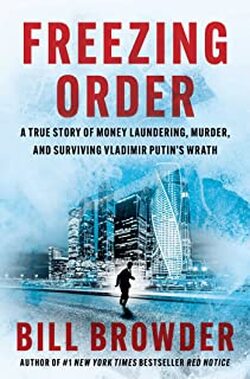 My main frustration with this book is that it has a lot of players and no index! There is no excuse for the lack of an index in today's world. As it is, for example, if you had forgotten who "Vladimir" is in the book, you had to read-back in the book to find a mention that defines him. This can be very frustrating when some players are referred to by both their first and last names alone. This is the sequel to Red Notice, Browder's excellent book on a subject that has had a huge influence on international politics… namely the Magnitsky Act. This law, now adopted by more than 34 countries, including Canada, allows countries to seize the assets of international criminals and the sponsors of terrorism. Putin is the big fish in that pond, and he is worried. Much of his wealth resides outside Russia. The book starts well before the book Red Notice was published and could be characterized as a diary of Browder's experiences as he published the book and pushed the Magnitsky Act around the world... And, of course, Putin's attempts to get him. If you have not read Red Notice, you should do so before you read this book. Spoiler alert: if you have not read it but plan to, stop reading this now! Browder set up a investment company in Russia which made millions. Putin stole the company and 230 million dollars, accused Browder of stealing that very same money, threw Browder's lawyer Sergei Magnitsky in jail, and tortured him to death. Browder created the Magnitsky Act to punish Russia and has made it his life's work. Putin wants him dead. The book reads like a Hitchcock movie script (think The Man Who Knew too Much, or North by Northwest). The innocent victim (Browder) goes to a lawyer to get help fight to the Russians. The lawyer's name is John Moscow (really!). He digs into Browder's case and helps him. But months later, he was working for Putin! John Moscow used his inside knowledge to harass Browder in an attempt to get him onto Russian soil. This is against all legal tenets but it took many court appearances to get the western courts to eject Moscow from the case. One lesson of this story is that the law, designed to protect the innocent, can be turned into a deadly weapon in the wrong hands. Moscow is a perfect example of what everyone hates: a crooked lawyer. The story goes on, at times almost comically, in its cloak and dagger clichés. The clichés turn out to be real. Another minor observation: the Russians (i.e. Putin) like to poison people, but they are really not very good at it. Quite a few have survived being poisoned, including a player in this story. Putin should stick to straight up assassinations, like Boris Nemtsov who was shot eight times right outside the Kremlin. A mystery truck had pulled up and stopped, blocking the surveillance camera's view. That story also figures in this James Bond plot. The original 232 million dollars had exploded into 232 billion, much of which went through Danske Bank. As a person of Danish descent, this was disturbing to me, but the Danes wasted no time in busting the bad guys when this crime came to light. I have nothing but admiration for Browder. He leads the life of a fugitive while fighting for a just cause. The madness of Putin does not stop with Bill Browder. Now he is waging a war he cannot win in Ukraine.
0 Comments
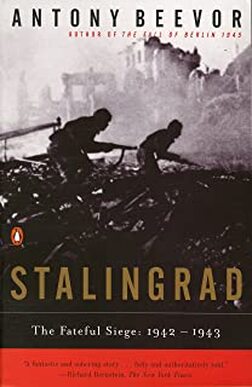 Another book about the first major defeat for the German Army of WWII. It is often called the turning point of the war. I would suggest that the war was lost in late 1941, when Hitler declared war on the US two days after Pearl Harbor, and the German Army was halted one hundred miles from Moscow. There are a lot of good books about this battle, and this is one of them. I will not summarize this book overmuch as I have already discussed the battle in other book notes. Four million men invaded Russia. The German's were famous for their armored Blitzkrieg (lightning war), but they still used more than 600,000 horses! Oddly, had this not been the case, the battle of Stalingrad might have ended a little sooner. When you run out of ammo, you cannot eat your tank. Every German horse at Stalingrad ultimately became soup. Stalin disowned his own son because he was captured by the Germans, which made him a traitor. The Russian railroad tracks were a wider gage than the rest of Europe. The tracks had to be narrowed or the goods transferred to a new train. This was very costly for the Germans. One German (Reichel), against orders, took a copy of the battle plan with him on a recon flight. He was shot down, and the Russians got the full skinny on what the Germans had planned. Stalin was too paranoid to take it seriously. Both Stalin and Hitler loved to issue "Not one step back" orders. To Stalin's credit, he was smarter than Hitler. It took some doing, but Stalin finally realized that allowing an army to retreat could save the army. Not so for Adolph. His stubbornness got the entire 6th Army killed or captured. During the harsh battle, one Russian was shot in the hand. He bandaged it and went to report that he had been wounded. He was taken out and shot. Why? Because he had obviously shot himself and had bandaged the wound to cover up his misdeed! Another Russian was captured, escaped and returned to his unit, only to be shot as a deserter. During the summer, Hitler was told that the Soviets were producing 1,200 tanks a month. Hitler was outraged, in that he knew the sub-human Russians were not capable of those production levels, In fact, they are producing 2,200 a month. In 1942, Russian aircraft production almost doubled. Hitler famously promoted General Paulus to Field Marshal in the hopes that this would cause him to kill himself, rather then be taken prisoner. He did not kill himself. Hitler had actually created four new Field Marshals, including Paulus, as a publicity stunt to distract from the disaster that was Stalingrad. The last German broadcast from Berlin was a faked message from Stalingrad. It was heard in Stalingrad and outraged the those few soldiers who still cared. We are watching a terrible conflict unfold in Ukraine. People are suffering and dying needlessly. And as awful as all that is, it is nothing compared to the hell on Earth that was the Battle of Stalingrad. About 10,000 civilians survived the battle. 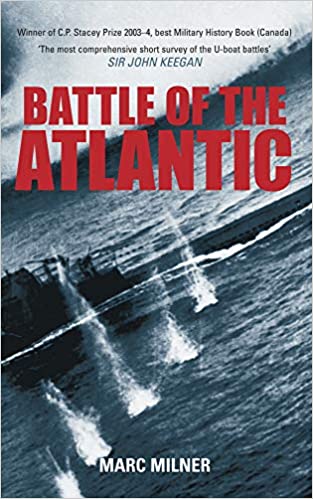 The Battle of the Atlantic (BoA) spanned almost the entire war, making it the longest war battle (any war) by a considerable margin. I found this book very informative, at least as far as ASW (Anti-Submarine Warfare) is concerned, and it has a large number of excellent photos, some only rarely ever seen. The battle was a classic example of move versus counter move, and technology versus counter technology. Britain won the technology wars with the aid of the USA. But in my mind, the real heroes of the war were the Canadians. Because the BoA lasted so long, it is hard to sum up neatly, or even find a specific turning point. If you saw the movie Greyhound w/Tom Hanks, you should try to forget it. While the ASW was pretty authentic, the idea of a American rookie destroyer captain leading three British escorts in herding a convoy across the Atlantic only one month after the US entered the war is a non-starter. The screenplay was written by Tom Hanks, and he succumbed to the lure of making the war all about the Americans. Admiral King ran the entire US Navy. He did not like the Brits and dismissed any and all of its sub hunting experience as twaddle. The British had been fighting the BoA for well over a year at that time. They had developed standards of practice that proved very effective. The US would enter the BoA in earnest after they started getting their own ships sunk off American waters. A much better, hard to find, movie about Canada and sub chasing is called Corvette 225 with Randolph Scott. It was a US production, but was very accurate in its depictions of Canada's role. In the BoA, the heroes were Canada (in part because we did more than our fair share) Britain, and the US… in that order. The Canadian Flower Class Corvette was a major player on the BoA. It was a small, single screw, sub chaser that played a large role. You would not want to be on one. Canadian destroyer crews used to joke that Corvette crews should receive submariner pay since its Corvette's forecastles spent so much time under water. Later versions enlarged and redesigned the forecastle to ease this problem. Later, twin screw versions of the Corvette were built and dubbed Frigates. The major technologies for the allies at play in the battle were: Huff Duff (HF/DF or High Frequency Direction Finding): Huff-Duff detected radio signals and calculated bearings and ranges. The Germans did not believe that the Brits could put radio direction equipment on a boat as it would be too bulky. This error in judgment would cost them. ASDIC (aka Sonar): This technology improved with every passing year. Active sonar used the infamous "ping"; passive listened for screw noises. RADAR (10cm and 3cm wavelengths): Radar at sea was a huge advantage. The shorter the wave length of the radar signal the better. It is a basic law of physics that you cannot see anything that is smaller than the wave length of the light being used. Radar is a kind of light. If you want to see a periscope, 10cm radar would catch it. If you want to see a sub snorkel, you need shorter wave lengths. Radar equipped airplanes would sink more submarines than any other mode of attack. Leigh Lights: Once an airplane, often a Sunderland flying boat, saw a sub with radar at night, it would sneak up on sub until they were almost on top of it, then turn on their very bright Leigh Light mounted under the plane flooding the sub in light, and then drop contact bombs. This meant that German subs were vulnerable when running on the surface, even at night. Running on the surface was required to recharge the sub's batteries. Air Dropped Acoustic Torpedoes: Of course, a sub chaser cannot launch an acoustic torpedo against a submarine because the ship itself is too noisy, as are the other convoy ships. But an airplane can, which they did to great effect. A typical scenario would be: A Sunderland or Liberator spots a sub radar during the day; it attacks; the sub spots it and dives; the airplane swoops in and drops its torpedo; which chases the sub into the deep and kills it. Hedgehog and Other Contact Munitions: The hedgehog was a large number of forward launched, small, fast sinking, contact bombs. A depth charge is a large explosive which can sink a sub from 20 feet away. The hedgehog was a small contact bomb. If it hit the sub, it would hole the pressure hull, and kill the sub. SQUID: SQUID was a single powerful shallow water, forward launched, depth charge that was slaved to the ASDIC signal of the sub. At just the right time (as calculated by a mechanical computer), as the sub chaser bore down on its target, the SQUID would be fired at the diving sub and explode at a depth based on the ASDIC signal. They were very effective. Shallow Water Depth Charges: Aircraft had no use for the heavy ship borne depth charges designed to sink a submarine at depth. What they needed was shallow water depth charges that could be dropped on a diving sub. They arrived later in the war. Code Breaking: Alan Turing and his code breakers cracked the German naval enigma machine codes. The Germans famously added a fourth rotor to the enigma machine, and Bletchley Park went silent for a year. After that, they were back in the cat bird seat, often cracking German intercepts before the Germans could. That is, they knew where German subs were better than the Germans. The code breakers of Bletchley Park saved thousands of lives and millions of tons of shipping. The major technologies for the Germans at play in the battle were: Subs, and Lots of Them: Compared to a ship, or especially a loaded ship, submarines were cheap. The Germans produced hundreds of Type VIIs (smaller, inshore subs); Types IXs (larger ocean going subs, the German mainstay); milchkuhne ("milk-cow") resupply-at-sea subs; and Type XXIs (equipped with larger batteries and the snorkel). U-boats were literally numbered on their coming towers (the index of this book, under "U" for U-Boat, is very long with entries like U-751, U-752 etc)), and at the wars end, 1,162 had been built! The Snorkel: The snorkel is just what it sounds like. Subs burned diesel and diesels need air. Some Type IXs were retrofitted with snorkels. The war ended in early May, yet in March, 1945, German industry still managed to pound out 100 type XXI subs! But it was too little, too late. Metox: Metox was a detector that warned subs if they were being scanned by radar. It could detect 10cm radar, but not 3cm until well into the BoA. GNAT (German Navy Acoustic Torpedo): When the first such torpedo was fired, it was plain to the people on the target ship that the torpedo was following the ships screw/engine noises. Within days, the Americans create a towable noise maker that defeated the torpedoes. Unfortunately, the US noise maker would shake itself to pieces very quickly. A Canadian design was adopted that worked perfectly. Decent Torpedoes: At the start of the BoA, German's were using magnetic exploders which proved to be very unreliable. They switched to contact exploders, which reduced their kill rate dramatically. Why? When a torpedo with a magnetic exploder passes under a ship, it explodes breaking the ship's back. Many ships required two direct hits with contact torpedoes to go down. The submarine war was the least survivable of German services. All the major sub aces of the war were killed at sea, remarkably the three most famous in just one month. Sixty three percent of submariners never returned home, making it the least survivable service on either side. On the surface for the allies was the Canadian, Johnny Walker, and many others. Walker fought through most of the war and racked up more sub kills than another other skipper. He developed many of the allies' ASW tactics. He died before the war ended of natural causes. The BoA was never really winnable for the Germans. Ultimately, American industrial might would have saved the day. As it was, the Americans were late in, and the BoA was characterized by moves and counter moves. The Germans were slow to adopt new technologies. The Canadians and British quickly adopted radar, HuffDuff, ASDIC, sonar, and the first true computer at Bletchley, called Colossus, for code breaking.  If you have seen the movie The Longest Day, and remember it, then you aware of part of the story of Pegasus Bridge. It was a critical bridge assigned to the British to capture. A word about names: The hero and leader of the Company is John Howard, played by Richard Todd in the movie. The attacking British crew included a chap named Todd Sweeny (his parents had a sense of humor), and another whose last name was Sweeny. Both were called Todd. And another fellow was named Pine Coffin! The D-Day targets for Howard and his men were actually two bridges. The Orne River and the Caen Canal run parallel to each other at this point, flowing roughly north to south, with the D Day beaches to the east. Benouville Bridge crossed the canal to the west. The Ranville Bridge crossed the Orne river to the east. There were about 500 meters apart. The aim was to land three gliders next to each bridge (six in total), take them intact, and hold until relived. It was to be the first action of D-Day starting at midnight on the morning of the 6th of June. The bridges were almost certainly wired for demolition. These bridges would be critical in getting men and material off the beaches and inland, Howard's glider hit the dirt only 50 meters from the Benouville bridge. The first soldiers to touch D-Day dirt were actually the glider pilots. They were both pitched through the glider windows and knocked unconscious. The other gliders also landed successfully, but a little further away. The first soldier to fire a round on D-Day was Howard himself. The whole company was known as D Company. They each sported a patch displaying Bellerophon astride Pegasus, the winged horse. The Benouville Bridge was renamed after the war to Pegasus Bridge and Howard had a street named after him in Benouville. The German garrison was run by von Luck of the 21st Panzer Division. It consisted, in part, of soldiers who were essentially slave soldiers: Poles and Russians and such, poorly trained, ill-disciplined, and disinclined to get shot at. The bridge was indeed wired, but the explosives had not been put in place. The soldiers on guard that night were caught napping. Both bridges were taken in fairly short order. Then the soldiers had to wait, both for paratrooper reinforcements to arrive, and for the inevitable counter attack by the Germans. The big fear was of the tanks stationed in nearby Caen. A counter attack did come and was repelled. But the main tanks never came because Hitler was famously snoozing and no one had the guts to wake him. Von Luck could not act without Hitler's OK. The airborne troopers did arrive… late and under-manned. Many troopers got lost in the surrounding woods. It was the sound of combat that actually lead them to their target. As per the movie, Lord Lovet came off the British beaches and headed straight for the bridges to relieve Howard, and they did so in style, with bagpipes playing. The rest, as they say is history. Caen was a stubborn target. The allies struggled on the beaches for much longer than planned. The town of Benouville was the first to be liberated. The owners of a local inn were the first to greet their liberators. They hosted get-togethers for the vets for decades after the battle. This book was based on interviews with the people who were there. It is a fairly quick and enjoyable read. Some good guys were killed, but for the most part, the story is one of valor, dedication and victory. 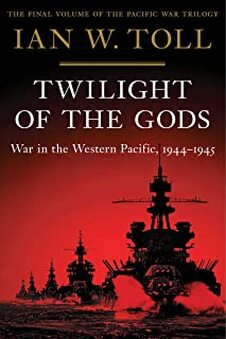 Admiral Kimmel and General Short, to whom this book is dedicated, were dealt a lousy hand. They were the top brass when Pearl Harbor was hit, and they paid the price. Kimmel ultimately committed suicide. MacArthur, on the other hand, had a nine hour heads up on the de facto state of war between the US and Japan, and he did nothing. Zip. Nada. Rather, he cloistered himself and read the bible. MacArthur, was a "pompous and ignorant ass", the Montgomery of the Pacific, and went on to become king of Japan. As a direct result of his sloth, half of the US air force in the Philippines was wiped out on the ground. He should have been court martialed and jailed, or even shot. But such is life and politics. This is a long and detailed book. It begins, more or less, with the invasion of the Gilbert and Marshall Islands. The first really big action was the Battle of Leyte Gulf, the largest naval battle in history. I will not discuss this battle in any detail as I have already done so with another book. MacArthur spent most of his time trying to take supreme control of all forces in the Pacific. Halsey, known as "Bull" Halsey was about as smart as his name sake. Dogged and pig-headed. Other commanders such as Spruence were more cautious. After Leyte, the Japanese navy was no longer a threat. But there was still plenty of tough fights ahead. The Marshalls, the Solomons, Tulagi, Guadalcanal, Wake, Ulithi, Peleliu, Kwajalien, Guam, Saipan, Iwo Jima, the Philippines, Okinawa… these are some of the better known islands that were taken during the island hopping part of the war. These island fights were bloody to say the least. Japanese suicide charges were fairly common near the start of this campaign, but too costly in terms of man power. Later, Japanese held islands were dug out labyrinths of caves and tunnels that had to be taken at a horrible cost. On Iwo Jima, for example, only a dozen or two Japanese soldiers were captured. Thousands died for their emperor. Japanese hawks basically lied their asses off to the emperor and the Japanese people. For example, they kept the loss of the four aircraft carriers at Midway a secret for many months after the fact, and even then downplayed the outcome. Meanwhile, US subs were choking the life out of Japan. The fleet had a huge appetite for oil, and the silent service made sure very little reached Japanese shores. On the other side of the coin, Japanese kamikazes appeared for the first time in the struggle for the Philippines. They were basically unstoppable and a precursor of today's smart weapons. They were responsible for an extraordinary amount of damage. Young pilots were taught just enough to take off and that was it. And they begged for the opportunity to live forever by sacrificing themselves for the emperor. The Japanese built the two largest battle ships in history: the Yamato (sunk off Okinawa) and the Musashi (sunk during the Battle of Leyte Gulf). They were huge (879 feet long; 72,000, tonnes battle loaded), and an anachronism. By now, battle ships were out and carriers were in. Many missions by US subs were memorable, but one stood out for me. A sub skipper named Enright had captained the Dace (all US subs were named after fish, the most famous being the Tang) and returned to Pearl with zero tonnage sunk. He felt perhaps he was not cut out for skippering a boat. But 8 months later, he decided to try again as captain of the Archerfish. On 27 August, he found a target that looked to be a large carrier. It was the Shinano, built on the third, now repurposed, Yamato-class battleship hull. After a long chase, the Archerfish fired a spread of 6 torpedoes. Four hit, and the Shinano went down. Normally, four hits would not have sunk her, but she was running on a reduced crew and had yet to be fitted out for war. Enright's story was not believed until after the war when the existence of the Shinano was revealed . A sub patrol's success is based on tonnage sunk. A good patrol might sink eight ships with combined tonnage of 40-50 thousand tonnes. Enright sunk one ship, and at 65,000 tonnes , had scored the highest tonnage sunk on one patrol. From the Philippines on, the main weapon of the Japanese was the kamikaze. The Japanese were happy to throw away their young men, and as mentioned, they really wanted to go. The Japanese had a number of kamikaze weapons (planes, subs, missiles and more), but the usual one was a young man in a crappy plane. As the war progressed, the Japanese had fewer and fewer planes, and more Kamikazes. This was due to the lack of oil, needed to smelt the steel, needed to make planes. On the American side, they had so many new planes coming in that the would simply retire, or bulldoze older or slightly damaged planes into the sand and replace them with newer, better planes. Such was their economic might. The worst battle, IMHO, was Iwo Jima… almost literally hell on Earth. Sulfur fumes and hot gases came out of the ground. If you were climb into a fox hole, you would be forced out just to cool down. The deeper you dug, the hotter the dirt got. It is difficult to describe how awful the conditions were on both sides. Iwo Jima gave damaged bombers, flying from Tinian to Japan and back, a place to land. This was a very big deal. At this time, the Japanese air force was all but non-existent, with the noted exception of suicide pilots. The Battle of Okinawa was waged in the air primarily by these planes. Okinawa was only 300 miles from the Japanese mainland. We all know how it ends. Due to politics, MacArthur, the general who should have been shot, became the new ruler of Japan, which quickly joined the ranks of civilized nations. A word or two about religion is appropriate. Both sides demonized the other. But any measure of civilized behavior, animated by religious fervor, the Japanese were far more fanatical. In addition to kamikazes, there were instances of ritual cannibalism. And the entire Japanese population, deluded by years of propaganda, and driven by the belief that they were the chosen people, and that the emperor was their actual and true god, were prepared to die. This belief held sway until August 14, 1945, when their god told them to lay down their arms to surrender. Which they did! One speech from one guy ended the war. One wonders how many lives could have been saved if he had done so earlier (in fact, due to politics, it was never really an option). Uncounted numbers of people died during the war to appease the gods. Christopher Hitchens said "Religion ruins everything", even war. The Japanese were told that the Americans were a mongrel and bloodthirsty race. Most were shocked by the humanity the Americans displayed towards them after their surrender… no doubt in part because they knew they would not have been so kind. MacArthur may have been a douche bag, but he did understand the psyche of the Japanese and used it to good effect. There are many arguments on both sides regarding the use of the A-Bomb. I will not go into them here, other than to say that using them probably saved many lives. One motivating fear was that Russia was rushing its forces to the East and they might try to take Japan's northern island, in which case Japan would have joined Germany as a divided country, one half behind the iron curtain. That would have been bad. This is a long read, but very well researched and written. 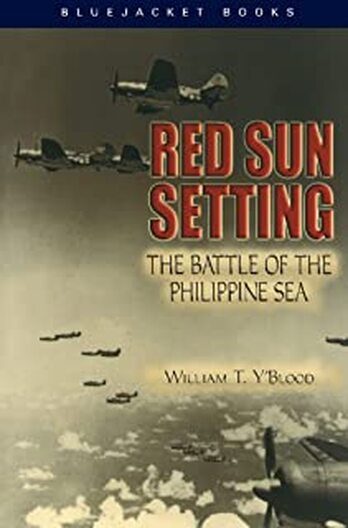 in thThe Battle of Leyte Gulf (BLG, October, 1944), which took place several months after the Battle of the Philippine Sea (BPS, June, 1944), essentially ended the mighty Japanese Navy as a threat in the Pacific. Ray Spruence, who acquitted himself quite well at Midway some two years before, was overly cautious. He headed the American side of the BPS and had a good shot at the taking out the Japanese Navy. But that would have to wait. Regardless, the BPS, AKA "The Great Marianas Turkey Shoot" was a great success. The Marianas were the target of the invasion that was designed to bring the Japanese out to face the Americans. The Marianas include Guam, Saipan (a sad story, where many Japanese, fearing the Americans, committed suicide), Tinian (the Enola Gay took off from there), and Iwo Jima (the bloodiest of the island hopping amphibious assaults). The Japanese were desperate at this point. They were up against it, primarily in terms of fuel. American submarines had dramatically curtailed their oil supply. This shaped the battle in many ways. At one point, Japanese destroyers were getting fueled from battle ships, rather than oil tankers! Much of the oil burned by the Japanese in the BPS was pumped directly from the ground in Tarakan, Indonesia and into the tanks of combat ships. This oil was high in paraffin and could be burned without refining. Thus, the fleet went to the oil, rather than the other way around! Spruence decided he would wait for the Japanese to come to him. This made sense because the Japanese Navy planes had longer range than the Americans, and the Americans wanted to draw the Japanese in close. This worked to a point. The Japanese found the Americans first and launched all they had. But the defeat at Midway had decimated their Naval fliers and crews. The battle hardened Americans fliers met a bunch of rookies and tore them apart. Like the Battle of the Coral Sea (BCS) and Midway, no ship ever sighted an enemy ship. American submarines played a large part in the BPS, sinking at least one carrier. No so, for the Japanese. The Thatch Weave, introduced at Midway by flier Jimmy Thatch, was used to good effect. The Japanese Zero (AKA Zeke) was faster and more agile than the Hellcat. But it could not take a punch. The Hellcat could. The Weave worked like this. Two planes fly together… a lead plane and a bait plane to one side and behind. A Japanese flier will naturally want to attack the rear plane first. The moment that happens, the two American planes veer violently towards each other, crossing each others paths and moving apart; and then they quickly swing back towards each other. This brings the Japanese plane chasing the bait plane under the guns of the lead plane, and down it goes. One or three stories stood out for me. A flier named Henderson flamed 4 "Zekes" (Mitsubishi Zeros) on his first pass, and then was lost from sight by his mates. His last message was "I knocked down four, and I have thirty more of them cornered!" Another flier named Vracia landed his plane on the Lexington after the first major air engagement. As he was climbing out of the cockpit, he saw Admiral Mitscher looking down at him from the ship's island. He flashed a huge grin and held up 6 fingers, one for each kill. A third story starred a Japanese flier. Because the Japanese fliers were so green, they had to be individually instructed by their flight leaders, in the air, minutes before they were to go into battle, regarding what each should do, and when, when they attacked. The Americans had a fluent Japanese speaker on board who listened in, providing essential intelligence for the Americans fliers about to enter the battle. At the end of the fight, the Americans let him go (i.e.: did not give chase) because, as an admiral quipped, he had done so much for them during the battle. Although there was much more to the battle, it ended with the Americans launching everything they had at the Japanese at extreme range. This meant many fliers were forced to ditch as they ran out of gas on the return leg. In the end , the Americans sank three carriers and did damage to a few other ships. On the Japanese side were the two biggest battle ships in world history: the Yamato (sunk at Okinowa) and Musashi (sunk in the BLG).They had a dozen or so carriers and many support and screening vessels. The Americans had a similar complement, including the carriers Yorktown and Lexington. Savvy readers will note that the Yorktown went down at Midway and the "Lex" was sunk in the BCS. The mighty US industrial base had replaced them. At the end of the war, the Americans had more than 100 carriers of various sizes. I believe that the Enterprise and the Hornet (the Dolittle Raid carrier) survived the war. If you recall the movie Magnum Force, there was a motorcycle "duel" on the decks of the Hornet at anchor in San Francisco Bay. The BPS finished the Japanese Navy's command of the air. Indeed, the now nearly useless aircraft carriers (due to lack of planes, pilots and crews) were used/sacrificed as a lure/feint during the BLG. The book has many fine photos and anecdotes. I enjoyed it a lot. The writing was compelling and It really aided my thinking about the Pacific War. It is frustrating to look at the shared sense of duty that the Americans had in 1944. Today, they can't agree on which way is "up".  ofThis book and The Splendid and the Vile cover much of the same ground, but from different perspectives. The latter looks at the politics and infighting in Fighter Command and other agencies from the top… Churchill, Beaverbrook et al and their upper-class struggle to win the war. This book views the struggle from the bottom. Regular men and women thrust into the war and getting life lessons in fighting and dying. The first familiar person mentioned, who appears again and again, was Douglas Bader. The double amputee was inspirational for millions of Brits. Another name that popped up a few times was Watson-Watt, the genius behind England's secret weapon: radar. Air Marshall Hugh Dowding and his junior Keith Park were the top people running Fighter Command. Leigh-Mallory was also there. His brother George Mallory was notable as one of the first to climb Mt Everest. He did not climb down and his mummified body stood guard over the route up for decades. Leigh-Mallory was re-assigned after the Battle of Britain to Burma. Ironically, he never made it: his plane ran into a mountain. I would write more about these folks, but the book lacks an index, so finding items in it is hard. I will only mention a few highlights. The very first Battle of Britain sortie was so badly botched that two friendly squadrons went at each other! The first fatality in the Battle of Britain was a British pilot, shot down by another British pilot. One theme came up regularly: the death of the British class system. War boils people down to their lowest common denominators, and class disappears. This was eye-opening for many people, especially young upper-class women who were suddenly removed from their posh surroundings and injected into the thick of it. Bader was always pushing for more aggressive tactics during the battle. He was an advocate, along with Leigh-Mallory, of the "big wing" concept, which never really got off the ground. He fought the Battle of Britain like a champion; got shot down; and closed out the war in Colditz. Polish pilots were terrific (in its original and modern sense). At the end of the war, they were told to go home. Home was now behind the Iron Curtain. Ultimately, the government relented and any Polish pilots who wished to stay, could. At the end, the V1s and V2s started falling. Brave ammo-less pilots would catch up to the V1 and tip it with their wing tips. This was called "nudging". This action threw off the V2s gyros causing it to crash. When the battle was won, both Park and Dowding were tossed aside. As the book notes, people are remarkably dismissive of their saviors after the are saved. This book was written just a few years ago. As a movie fan, I was pleased to see a lot of references to the movies that have been made about this period, most notably Reach for the Sky and The Battle of Britain. I can think of a couple of propaganda films that featured killed British flyers going to heaven where they met their slain mates. I thought this was just story telling, but it actually reflected a prevalent strong belief in spiritualism at the time. This is not "spiritualism" as we use the word today. Then, it meant belief in ghosts. People like Dowding write books on the subject. I liked this book better than The Splendid and the Vile in that it spoke more about day-to-day life of all the service people during the war. The Observer Corp, Home Guard, and especially WAAFs and various other female groups that worked at Blechly Park (code breaking), and a Bently Priory (tracking incoming bombers and scrambling fighters to intercept), and operated the radar units. 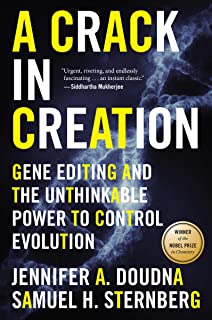 If you examine the book cover, you will notice that some of the letters are in yellow, the others in white. The letters in yellow are A, C, T, and G… the first letters of the four amino acids that make up DNA. The author's last name is "Dou DNA", but that is just a coincidence. So this is a book about biology. I know a lot more about physics and computing than I do about biology, but oddly, that knowledge was quite helpful. My thanks to Blythe Nilson who corrected some ugly errors in my first draft of this piece. CRISPR, the underlying technology here, is as important to our future as nuclear power. So you should know something about it. You don't need to know how it works, just what it might be able to do. Physics and chemistry are closely related. Biology is chemical. And DNA biology is also very computational. DNA's ACGT structure is binary (i.e. base 2) code. You might say "Then why are there four letters, rather than two?" Because nature needed an easy way to copy DNA. The DNA chain is made up of paired letters: A always pairs with T, and G with C (each pairing is a bit). This allows the DNA to be cut in two long pieces, and then each piece is reassembled into a complete DNA chain by re-pairing (or repairing) the chain by adding the appropriate matching letter. One copy of DNA becomes two. This is the chemical basis for reproduction. Each triplet of these letters code for a particular amino acid, and the sequence of DNA dictates how these amino acids will be built into proteins. Proteins are the true stuff of life. As I read this book, I was struck by the number of times I could see software analogies in the chemistry. In computing, data and code are two sides of the same coin. The same is true for the molecules of life. They are hardware (a fixed bunch of atoms arranged just so) and software (do this, then do that) all packaged up into a single object. Enter CRISPR (an acronym for Clustered, Regularly Interspaced, Short Palindromic Repeats), a new technology that is both enormously promising and bloody scary at the same time. CRISPR is not a great name. Even knowing what the letters stand for tells you nothing about what is actually is. The one chapter in the book that describes the CRISPR details is challenging. It is full of acronyms and strange words, making it hard to follow. The rest of the book is much less challenging. CRISPR was initially just an observation that part of the DNA of the bacteria consists of Repeating Clusters of DNA. The repeated bits read the same forward as backward (Palindromic), were quite Short, and were always the same distance apart (Regularly Interspaced). It soon became apparent that these genes were associated with the bacteria's immune system. What a bacteria fears is a phage (short for bacteriophage), a virus that attacks bacteria. The CRISPR genes contain a length of genetic material in the Regularly Interspaced part. These bits of RNA are actually viral RNA that was taken from a phage in the past, and is now used as a pattern matching template to recognize viral DNA. Associated with CRISPR is an enzyme that, once activated, destroys its DNA/RNA target… in this case, the phage. Aside: RNA and DNA are chemically very similar and sometimes serve similar purposes. RNA is a single stranded molecule, and DNA is double stranded. RNA uses uracil (U) instead of thymine (T) in its code. Once the enzyme is released, it zooms down the DNA chain at a rate of 300,000 nucleotides per second, carving it up into amino acid junk! That is fast! Scientists realized that this mechanism could be used to find, change, and/or disable genes with amazing accuracy. For a software guy like me, I see many analogies to computer code. Each segment of phage DNA/RNA in CRISPR is used as template to find an invading phage and kill it. This is like a parameter to a subroutine or, if you prefer, a kind of microscopic Google search using the DNA segment as the search target. This is hardly surprising since, at its core, genes are a series of zeros and ones that are used to make you and me. In other words, it is all software and software is easy to change (hence the "soft" part). CRISPR technology has enormous potential for both good and evil. It might be used to cure horrible genetic diseases such Huntingtons, or it could be used to create supermen. It can be used to hunt down one gene with one wrong letter, tag that gene for repair, and then get the mechanisms of body to repair it. Sickle Cell Anemia is one such disease. When writing software, one generally designs top-down and builds bottom-up. In the software of real life, there is no design, only what works. Software starts with building tools; and then uses those tools to build larger software structures which, in turn are used as tools to build even more complex structures and procedures. And with all these tools lying around, there often comes a realization that the existing tools could be easily repurposed to do something that previously seemed out of reach. I have experienced this many times in my software career. Bio-researchers are discovering all these tools lying around in the cell and are closing in on learning how to use them. CRISPR opens many doors, some of which we should probably keep locked. Curing an awful disease is obviously a good thing. Changing human germ cells is much scarier. Changes to human germ cells means that the change is passed on to offspring. And that smacks of eugenics, NAZI supermen, designer babies etc., and it raises many ethical questions. The closing chapters of the book focus on the future and the inherent advantages and dangers that CRISPR embodies. Biotech like CRISPR gives us god-like powers to manipulate life. Advances in biotech and computing make it possible for us to wield those powers. I do not think it an exaggeration to say that CRISPR is the biotech equivalent of the Manhattan Project. I hope mankind learns to use it wisely, because use it we will. 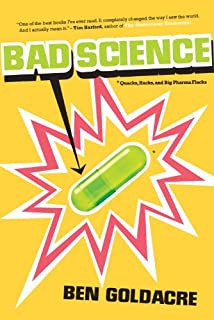 Ben Goldacre is a UK Physician. He has written two books on this general subject: the shorter Bad Science and the longer Bad Pharma. He is a good writer with a cutting sense of humor. Unlike most doctors (GPs anyway) he knows a thing or two about statistics and probabilities. Blythe N. and Dave H. know about my disdain for chiropractors. During our radio days, their disdain for nutritionists turned out to be just as strong. Ben would concur. Goldacre fires broadsides at the usual targets such as homeopathy, as well as a few lessor known examples of bad science, like brain training, detoxing, and the anti-oxidant scare. And like many other skeptical publications, he takes a close look at placebos and regression to the mean, the life blood of quacks everywhere. Good vs bad science is easy to recognize, even for the cognoscenti, and for every study, there is an opposing study. To deal with this, a check list protocol was set up called JADAD a meta-analysis protocol was built on JADAD called the Cochrane Collaboration. These two ideas allow the truth to eventually come out. It is likely, for example, that the recent reversal on cholesterol was based on this method. Surprisingly for some, he poo-poos placebo based trials, as this is often a dodge. Researchers test their products (i.e.: drug) against placebo, the lowest possible standard, and not against the best product on the market at the time. A major warning from the good doctor: If anyone expresses anything with respect to diet in terms of certainty, they are full of crap. He debunks another myth by stating that most of modern medicine is, in fact, evidence based. Here are some fun real-world examples (think big tobacco) of cheating in the business of drug science.
Or do what the NFL did: set up its own bad research; establish a self-published journal; and then stack it with doctors on the take (see League of Denial). Both Bad Pharma and this book go into some detail on this topic. One solution, which is not yet been adopted, is to register experiments before they start. This forces a priori documentation of experiment protocols, success/ fail criteria, etc. and would go a long way toward eliminating some of the manipulation that goes on today. The books closes with a discussion of the MMR (measles, mumps, rubella) fiasco. Ben has a few kind words for Jenny McCarthy et al. This is must reading for all skeptics. 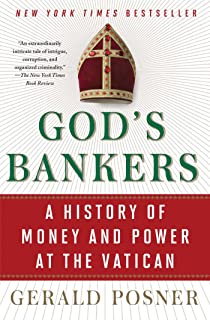 The book follows the money. 6th century: Indulgences created to raise money. Full absolution granted to Crusaders; partial to Crusader helpers. You could even pay to have your relatives placed on the fast track out of Purgatory. And donations made The Rosary more powerful. 16th Century: Leo the X sells indulgences for sins not yet committed (the sin futures market) 19th Century, Gregory XVI needs more money so he borrows from the Rothschilds, who are Jewish in the extreme. Pius IX tears down the Jewish Ghetto walls in Rome to appease the money lenders. It did not matter much, Jews were forbidden to move anyway. Pius then sold Vatican bonds, freed himself of the Rothschilds and rebuilt the ghetto walls. In 1858, a housekeeper secretly Baptized a Jewish kid. Pius found out and kidnapped the kid and raised him Catholic! Early 20th Century. Leo speaks out AGAINST separation of church and state; freedom of the press, and religious tolerance. 1929: Pius XII signs Lateran Accords with Mussolini (an atheist). The church was suddenly tax exempt on just about everything, even property taxes. Nogara is tasked to manage Vatican money and everything changes. Money begets money. The Curia expands rapidly. To raise more money, they occasionally declared a year to be "Holy", and begged for more dough. The church indulges in arbitrage. 1935: The Vatican has its fingers in every aspect of the Italian economy. Only the government owned more property. But lending money at interest is still naughty! 1930: The Reichskonkordat deal with the Nazis is signed. 1/3 of Germans were Catholic. Money from them for the Church money was deducted was deducted at source. The Vatican was rich! The War: Despite tangible evidence of the Holocaust, the Pope refuses to speak out about anything! At the core… money. The Pope found his voice after the war ended. One Father (Juricev) said during the war that it was not a sin to kill a Jew or a Serb… as long as they were older than 7! Too many sins to enumerate here. The Vatican did business with blacklisted countries during the war. They learned how to launder money. 1942: Nogara creates the Opere di Religeone (the IOR, aka the Vatican Bank). The only bank with its own country (and vice verse), unrestrained by borders or pesky audits. 1943: The Vatican is heavily into the Insurance business. Jewish policy holders were rarely paid out. The Rat Line refers to the Vatican underground railroad for Nazis after the war. The Germans (1/3 of them Catholic) used the Vatican Bank to store stolen loot. The Vatican provided shelter, documents, and money for fleeing Nazis. The Pope even asked for clemency for a leader of the infamous Einsatsgroupen killing squads. Vatican refugees were a laundry list of the worst monsters of the 20th century, including Clause Barbi and Adolph Eichmann. The Vatican was so afraid of the commies they would do anything. For them: Catholic + Nazi == Fine, possibly misguided, fellow; Catholic + Commie === Excommunicated bastard 1960: The church owns 120 million square feet of property (tax free). The only sovereign state with more territory outside its borders than in. Enter the Mafia with Sindona. Sindona was hired to help manage Vatican money. Sindona met Gelli, a business man and Masonic Lodge (called P2) Leader. The Vatican hates Freemasons, because they are anti-religious and partly commie. Catholic + Freemason == excommunication. And yet, many Vatican priests and insiders were Masons. 1967: The Italians finally tax the Vatican just a little. By now Vatican holdings are a maze of holding companies, nearly impossible to untangle. But the Vatican did have money in munitions firms, pharmaceuticals (that made birth control pills), and printing companies that made porn. Marcinkus ran the IOC. He and Sindona were as bent as they come. Enter Calvi (who would ultimately be found swinging from Blackfriar's Bridge), a banker. Also bent. Marcinkus sat on the board of many banks, many of which were off-shore tax havens. Sindona had 48 such companies. Sindona bought Franklin Bank in the US (18th largest), which would eventually go down as the biggest bank failure in US history. Meanwhile, Sindona spent 5.4 million on the Nixon campaign in '73. Marcinkus and Sindona would play pat-a-cake with Italian and US justice for years. Sindona was given a Man of the Year Award by the US Ambassador to Italy. The IOR had 175 million in Calvi backed off shore companies. Sindona blackmailed Calvi into helping him. In 78, a Pope dies; A new Pope (John Paul I) is elected who promises change, including firing Marcinkus; That Pope is (almost certainly) murdered; The Pope's murder was covered up; And a new Pope (Is the Pope Polish?) John Paul II came in. The Pauline Monks affair breaks. Monks stole millions; and spent it on the usual (fast cars, loose women, etc). Their guilt was beyond question. The Pope issued a decree to stop the Vatican investigation. Another cover up Sindona, Calvi (Blackfriar's Bridge) and Marcinkus were the top of a rouges gallery of criminal assholes. Sindona was a mob connection; Marcinkus ran the IOR; and Calvi was mob and off-shore bank connection. The collapse of Franklin Bank had many repercussions. Judges and prosecutors killed. Sindona; faked his own abduction went on the run; got caught; got tried; and then was poisoned in prison. Meanwhile Calvi was in financial trouble. He tired every source he could, but his fate was sealed. More facts about P2 (the Masonic Lodge) came out. Lots of members all over the Vatican, police and government. The Vatican was in bed with an investment bank called Ambrosian's, run by Calvi. The Vatican denied this, but proved to the banks biggest debtor. When this bank collapsed, the Vatican told the Italians to shove their material witness requests. The rest of the sordid tale is low-lighted with the Vatican's reply to the world when accessed of crimes. They ranged from: (silence), "It is the nasty media", and "How dare you. This the church." to "Fuck off… we are a sovereign country and we answer to nobody." That is, they claimed diplomatic immunity. In one instance, the Vatican sang and danced when they were serves with papers. Two years later, investigation ongoing, the Vatican said it ignored the papers because they did not come in a diplomatic pouch. Marcinkus was teflon. He out-lasted many Popes. He was under indictment for a long time and could not leave the Vatican. He was due to be fired by John Paul I, but the Pope was murdered (and the murder covered up) just before it was to happen, Whew… that was close. He ended up at some shitty little parish in Arkansas or some such. John Paul II was useless. Benedict (Ratzinger) was senile. He ducked every issue (and there were shitloads of them) until the report about gays in the Vatican came out. He could not take it and quit. Among other sins, he refused to sanction a priest who diddled 200 deaf boys! Pope Francis has made huge strides in cleaning up the IOR. He has made controversial statements about gays and rape victims. This is all to his credit, all of which was cancelled out when he refused to cough up the names of defrocked pedophile priests from the UN Child Protection branch. The church even allowed some convicted priests to return to duty! The Vatican has spent 4.5 billion on abuse settlements, 1.5 billion of which was lawyer's fees. Meanwhile, the Vatican owns gobs of real estate and has tons of money (some of it Nazi gold) all raked off of money laundering. |
AuthorLee Moller is a life-long skeptic and atheist and the author of The God Con. Archives
May 2024
Categories
All
|
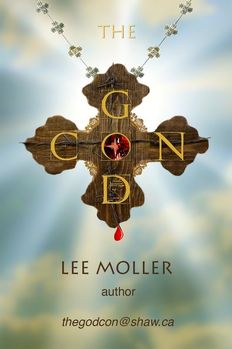
 RSS Feed
RSS Feed